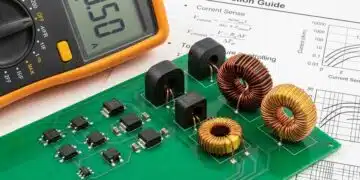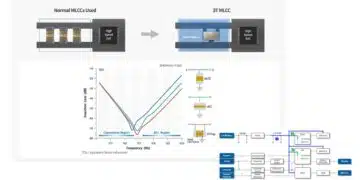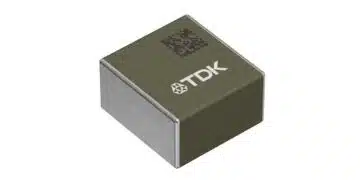Cornell Dubilier announces the introduction of a new series of higher voltage and high energy density supercapacitors.
The series will be released under the Illinois Capacitor brand. DSF Supercapacitors offer a notable jump in voltage rating over typical supercapacitors to 3.0 WVDC for a single component and 6.0 WVDC for a dual-pack device. This higher voltage spec results in greater energy densities, which in turn saves space and may reduce the number of devices required.
The DSF Series includes 17 different value/voltage combinations, ranging in capacitance from 1.5F (Farad) to 600F, with voltage ratings from 3.0 to 6 WVDC. Multiple devices can be banked in series or parallel for even higher voltage or capacitance.
ESR varies by part but is lower than most capacitors with similar storage capabilities. With an operating temperature range of -40 °C to 85 °C @ 2.5V (-40 °C to +65 °C @ 3.0V), the DSF is tolerant of wide-ranging operational environments.
Like other supercapacitors offered under the Illinois Capacitor brand, the DSF Series gives engineers increased design options while holding down costs. With increased energy storage, supercapacitors can provide instantaneous bursts of power that cannot be matched by conventional capacitors. That capacity makes it possible to smooth brief power interruptions, supplement batteries, or even be used in place of batteries in certain applications. Unlike batteries, DSF supercapacitors do not degrade with each cycle and are rated at 500,000 cycles. Operating life is expected to be up to 10 years.
Applications for DSF supercapacitors include:
- solar and wind energy harvesting
- mechanical actuators
- AGV (Automated Guided Vehicles)
- EV transportation power
- smart utility meters
- IIoT
- pulse battery pack alternatives
- memory backup
- battery/capacitor hybrids
- UPS systems
- emergency lighting
- LED power
- solar lighting
- or anywhere that significant energy storage is needed.
Depending on voltage and capacitance, there are four-lead configurations available. These are radial, two-pin snap-in, four-pin snap-in, and radial dual pack. Case diameters and configurations vary. Parts are also fully RoHS compliant. Starting at $0.55 at 1,000 pc quantities for a 5 Farad at 3.0 Volt. All items are in distributor stock, with production quantities in stock to 16 weeks. Custom modules, with active or passive balancing, are also available, to meet higher voltage or capacitance requirements.
HIGHLIGHTS
- High Voltage
- Very Fast Charge/Discharge
- High Power Density
- Lower ESR
- RoHS Compliant































